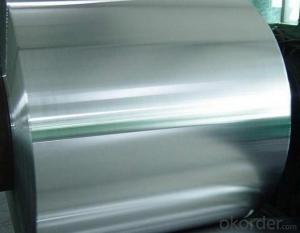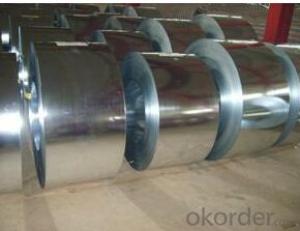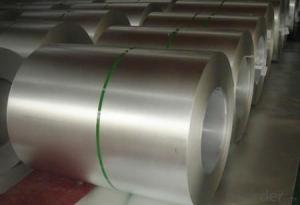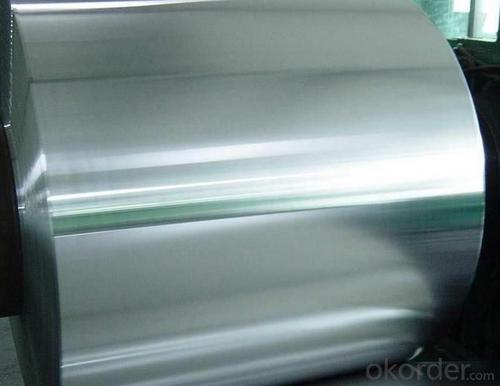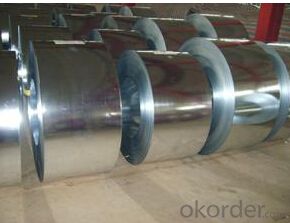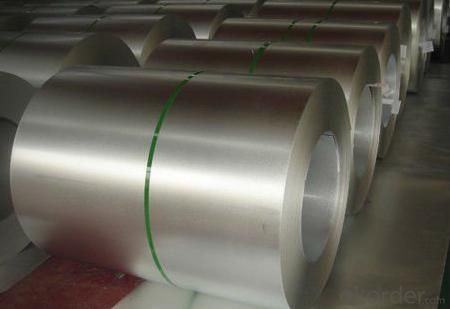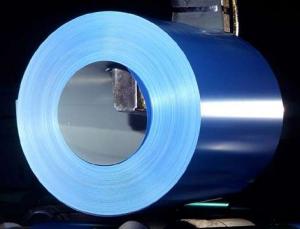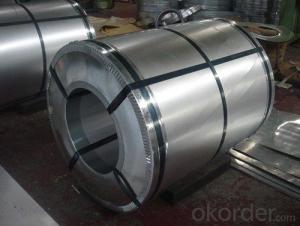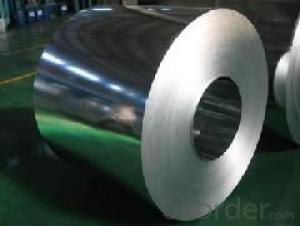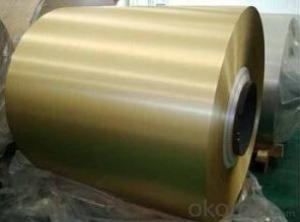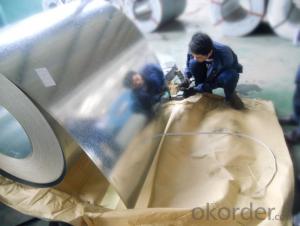Hot-Dipped Galvanized Steel Coil for Building Material
- Loading Port:
- Shanghai
- Payment Terms:
- TT OR LC
- Min Order Qty:
- 25 m.t.
- Supply Capability:
- 10000 m.t./month
OKorder Service Pledge
OKorder Financial Service
You Might Also Like
Basic Info.
Model NO.:GT00818
Surface Treatment:Galvanized
Additional Info.
Trademark:GT
Packing:At buyer′s requirement
Standard:GB,JIS,ASTM
Origin:CHINA
HS Code:72123000
Production Capacity:50,000 mt/year
Product Description
Commodity: Hot dipped galvanized steel coil
Size: Thickness: 0.20mm to 1.2mm; Width: 500mm to 820mm
Surface finish: Regular spangle; Small spangle
Surface treatment: Chromated passivation
Zinc coating: Z08, Z12, Z18
Packing: Mill's standard packing for exporting
Usage: used in the industries such as construction ,cold rolling forming and electro mechanics manufacturing, household electric appliance manufacturing and etc
Standard adopted: GB/T2518-1998;Also we supply such steel strips according to JIS,ASTM standard to meet users'requirements.
Steel grade: Q195,Q195L,SPCC(Other material require agreement )
Equivalent standard: JIS G3302 1998 or ASTM A653M/A924M 1998
Price Terms: FOB, CIF Term
Payment Terms: T/T, L/C at sight
Delivery: 15 days after receiving your valid L/C/down payment
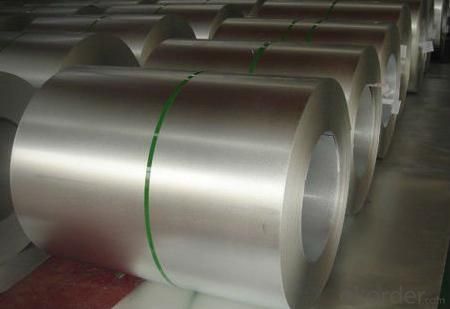
Acceptable payment term and way?
T/T,L/C, T/T + L/C, D/P
Acceptable price term
FOB CNF CIF DDU CPT
Do you accept OA payment terms?
Yes, sure, but it normally depending on the order value
Do you have QC team?
Yeah, sure, our QC team is very important, they will keep the qualitycontrol for our products.
What is the validity of your quotation?
Normally 7 days.
What is your advantage?
24 hour quick response /Customer oriented/ Credit foremost/ Top quality Excellent
What is your acceptable payment term?
TT,LC,OA etc
- Q: I'm trying to bend stainless steel spoons, forks knives etc. for an art project. Will heating them help bend them into certain shapes or will heat only strengthen it? What is the best way to bend stainless steel?
- We are regular buyers of such bends.
- Q: What are the different methods of transporting steel coils?
- There are several methods of transporting steel coils, depending on factors such as the weight, size, and distance of the shipment. Some of the different methods include: 1. Flatbed trucks: Steel coils can be transported on flatbed trucks, which have a large open platform for easy loading and unloading. This method is commonly used for short to medium distance shipments and allows for easy access to the coils. 2. Rail transport: Steel coils can also be transported via rail. Specialized railcars called coil cars are used for this purpose, which have a curved interior to securely hold the coils in place. Rail transport is often used for long-distance shipments, as it is cost-effective and can handle large quantities of steel coils. 3. Shipping containers: Steel coils can be loaded into shipping containers for transportation via sea or inland waterways. The coils are usually secured inside the container using bracing or blocking materials to prevent movement during transit. This method is commonly used for international shipments and allows for easy handling and transfer between different modes of transportation. 4. Barges: In certain cases, steel coils can be transported on barges along rivers, canals, or other inland waterways. Barges are often used for large and heavy shipments, as they offer a cost-effective and efficient mode of transportation. 5. Roll-on/roll-off (RoRo) vessels: RoRo vessels are specialized ships designed to transport vehicles and large cargo that can be rolled on and off the ship. Steel coils can be loaded onto trailers or flatbeds and driven onto the vessel, making it a convenient method for transportation. 6. Air freight: While not as common due to cost considerations, steel coils can also be transported by air. This method is typically used for urgent and time-sensitive shipments, or when the distance is too great for other modes of transportation. Air freight offers the advantage of speed and can be a viable option for certain situations. Overall, the choice of transportation method for steel coils depends on various factors such as cost, distance, time frame, and logistical requirements. Freight forwarders and logistics providers can help determine the most suitable method for a specific shipment.
- Q: How are steel coils used in the manufacturing of body panels?
- Steel coils are used in the manufacturing of body panels as they are rolled into flat sheets and then cut and shaped to form the desired body panel design. These coils provide the necessary strength and durability required for automotive body panels, ensuring that they can withstand the rigors of everyday use and provide structural integrity to the vehicle.
- Q: How do steel coils contribute to the automotive manufacturing sector?
- Steel coils are essential in the automotive manufacturing sector as they are used to produce various components such as body parts, frames, and suspension systems. The high strength and durability of steel coils make them ideal for ensuring the safety and structural integrity of vehicles. Additionally, steel coils are easily moldable, allowing manufacturers to create complex shapes and designs, contributing to the overall aesthetics and functionality of automobiles.
- Q: Can steel coils be coated with tin?
- Yes, steel coils can be coated with tin.
- Q: Can steel coils be bent or shaped?
- Yes, steel coils can be bent or shaped. Steel coils are flexible and can be easily manipulated into various forms or shapes through processes like bending, rolling, or stamping.
- Q: What is the process of galvanizing steel coils?
- The process of galvanizing steel coils involves immersing them in a bath of molten zinc to create a protective coating. The coils are first cleaned and then passed through a series of chemical baths to prepare the surface for galvanization. Afterward, they are dipped into the molten zinc, which bonds to the steel to form a corrosion-resistant layer. Once coated, the coils are cooled, inspected, and prepared for shipment or further processing.
- Q: What are the common coil diameters available for steel coils?
- The common coil diameters available for steel coils typically range from 24 inches to 72 inches.
- Q: How are steel coils used in automotive manufacturing?
- Steel coils are used in automotive manufacturing to create various components such as body panels, frames, and suspension parts. These coils are unwound, shaped, and cut into specific sizes and shapes to fit the required design. The steel's strength, durability, and flexibility make it an ideal material for ensuring the safety and structural integrity of vehicles.
- Q: What are the common coil processing equipment used in the industry?
- Some common coil processing equipment used in the industry include coil slitters, coil flatteners, coil feeders, and coil recoilers. These machines are essential for processing metal coils into various shapes and sizes, allowing for efficient production and manufacturing processes.
Send your message to us
Hot-Dipped Galvanized Steel Coil for Building Material
- Loading Port:
- Shanghai
- Payment Terms:
- TT OR LC
- Min Order Qty:
- 25 m.t.
- Supply Capability:
- 10000 m.t./month
OKorder Service Pledge
OKorder Financial Service
Similar products
Hot products
Hot Searches
Related keywords
